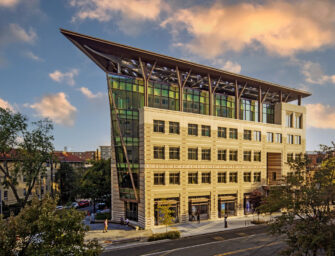What’s the Role of the Scientific Community in Combating Sexual Harassment?
Originally posted to the Wiley Exchanges community.
While sexual harassment in academia and in scientific workplaces is receiving increasing attention by the media, it is by no means a new phenomenon. Now that the topic is finally receiving some of the attention that it has long deserved, the time is right for scientific societies to lead the way to create a culture where sexual harassment, and harassment of any kind, is not tolerated.
A call to respond

Eric Davidson, PhD, speaks at the 9 September workshop on Sexual Harassment in the Sciences: A Call to Respond.
I recently had the honor of participating in and speaking at the workshop, “Sexual Harassment in the Sciences: A Call to Respond,” funded by the National Science Foundation and convened by the American Geophysical Union (AGU) in partnership with a number of other societies, including the American Association for the Advancement of Science (AAAS) and the American Chemical Society (ACS). More than 60 leaders from societies, government agencies and universities spent the day discussing the pervasive issue of sexual harassment in our community, identifying challenges and generating ideas on how to address the issue as a community across a broad range of disciplines and environments.
As a community, we realized we need to go beyond talk. We need action. We need to address harassment directly where policies are enforced. We must ensure that offenders experience real consequences, and victims and bystanders are protected from retaliation. Scientific societies should lead by example and should be a trusted source of resources for our members to obtain the information and support that they need. We should work together to share best practices, update codes of conduct, encourage and facilitate further conversations, forums, and publication of articles, and offer support and guidance to victims, bystanders and leaders in our communities.
Why men need to be more involved
Personally, I’d like to see more men involved in these discussions and making commitments to become better informed about the pervasiveness of harassment in many science workplaces, the roles that they can and should play when they observe harassment, and their responsibilities to help create a culture where harassment is not tolerated. Men are disproportionately represented in the sciences, especially in senior positions, so logic follows that men need to help carry more of the load in addressing this issue by finding solutions and helping transform the culture of labs, classrooms, field camps, ships and anywhere that research and learning are conducted.
Every locale for doing and learning science should be one that is unquestionably safe and welcoming. We need to come together as a community if we’re going to create a culture that encourages and enables all scientists.
What’s next?
At the end of the workshop, AGU launched the stopharassment.agu.org website. The site provides information, resources and articles on the topic of harassment in science, including how other societies have addressed the issue. I encourage you to take a look and to think about the issue and how you can help. Guiding principles, developed from feedback from the workshop, are planned for release by the end of the year. Many attendees, in addition to the co-sponsoring organizations, have expressed an interest in continuing to further this work.



There are no comments
Add yours